Use these tactics
Let’s explore these tactics with an example: Pip’s Cafe
You’re working with Pip’s Cafe owner, who insists on an app you believe isn’t needed. Though you can’t override the decision, use these methods to subtly challenge and improve the idea.
1
Use Solution Aikido to uncover hidden problems behind solutions
Use Solution Aikido to uncover hidden problems behind solutions
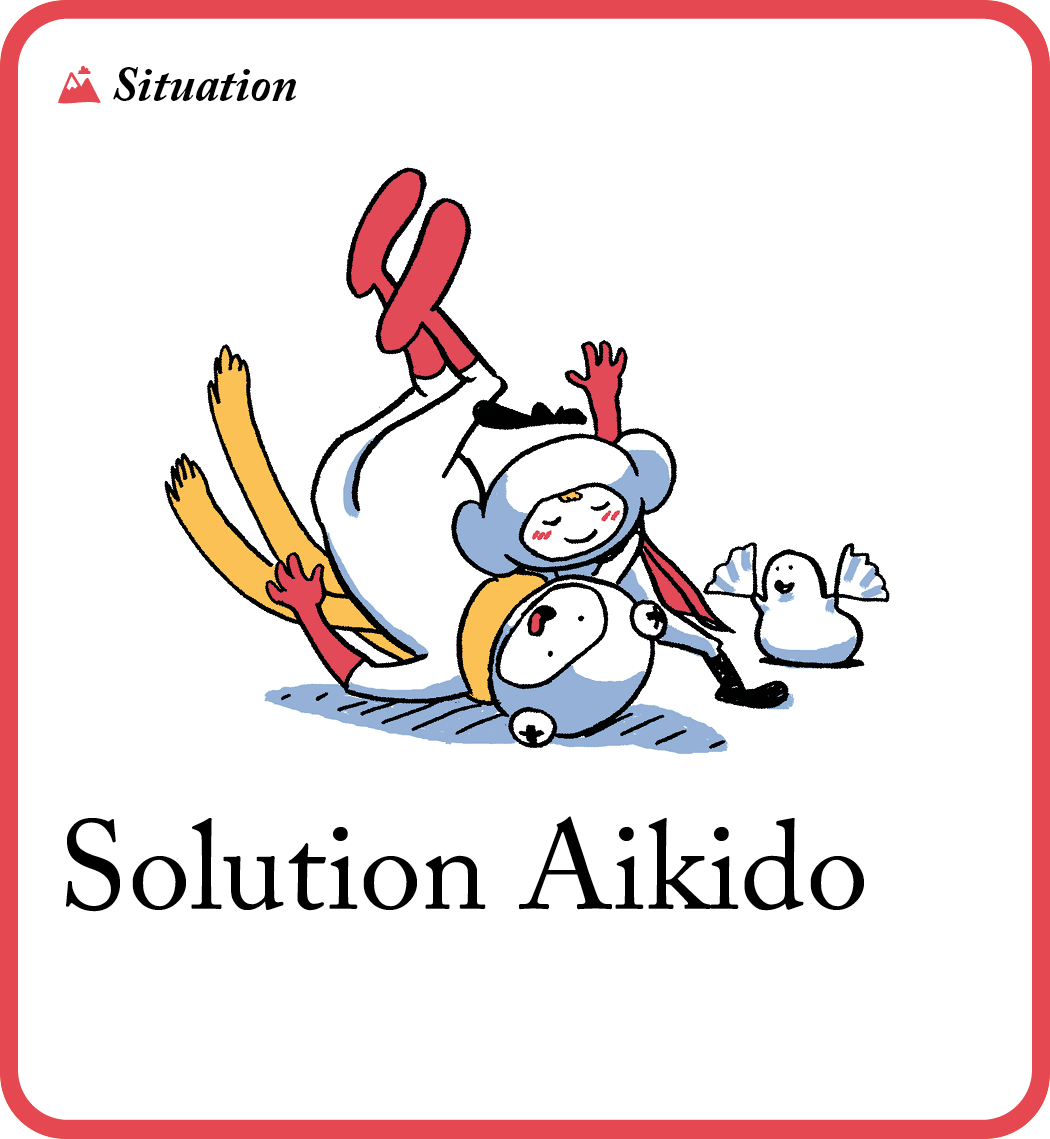
🧠 What’s the goal? Find the real opportunity behind a suggested solution so that you don’t waste time building the wrong thing.
👀 Why it’s important: For most of us, jumping to a solution is easier than articulating an underlying pain or problem. So when a colleague or customer starts solutionising, don’t fight it. Instead, like a martial arts expert, redirect their energy to find the real needs hidden inside their request.
💡 Tip: your influence starts when you arrive at the conversation willing to be persuaded.
Instructions
-
When someone wants to tell you their idea, let them! Help them feel heard. Summarise the idea back to them and tell them something honestly positive about it.
-
Then build on the energy in their idea to uncover which problems or opportunities they’re really responding to. Conversation with the shop owner might go something like this:
Indirect: “Once you have an app <solution>, then what happens?”/ “What will the app <solution>?”.
Direct: “What problem are you trying to solve with this idea?”.
Example answer: “Well customers will have the app on their phone and think of us more, like pre-order drinks. Also apps are cool.”
Direct: “What matters about pre-order drinks?”/“What makes the problem so bad that you need this?”
Example answer: “There are long queues at certain times, and we are trying to predict when this happens. I see people walking away instead of queueing. I would rather that they pre-order and be confident they can get their coffee when they want it.”
Explore more options: “What other ideas did you discard before you chose this one?”. (If they’ve discarded a bunch of ideas already, that gives you extra context).
Example answer: “We considered a loyalty card system, expanding our seating area, and even implementing a faster coffee machine. However, we felt an app would integrate all these solutions, providing a more modern approach.”
-
Use labelling. When you think you understand the real problem, paraphrase it back to them, for example:
-
Paraphrase:“It seems like you want to get <result> without <frustration>?”
Example: “It seems like you want to get guaranteed order accessibility for customers without the frustration of long cues?” -
Paraphrase: “It sounds like you want less <pain> without losing <benefit>?”
Example: “It sounds like you want to even out order volumes without overwhelming baristas and without losing customers to the long waits?”Usually, you won’t have fully understood, and they’ll happily give you more information. Keep digging and labelling. You’ll know you’ve understood when they say “that’s right!”.
-
2
Use Time Machine to unlock experimental thinking
Use Time Machine to unlock experimental thinking
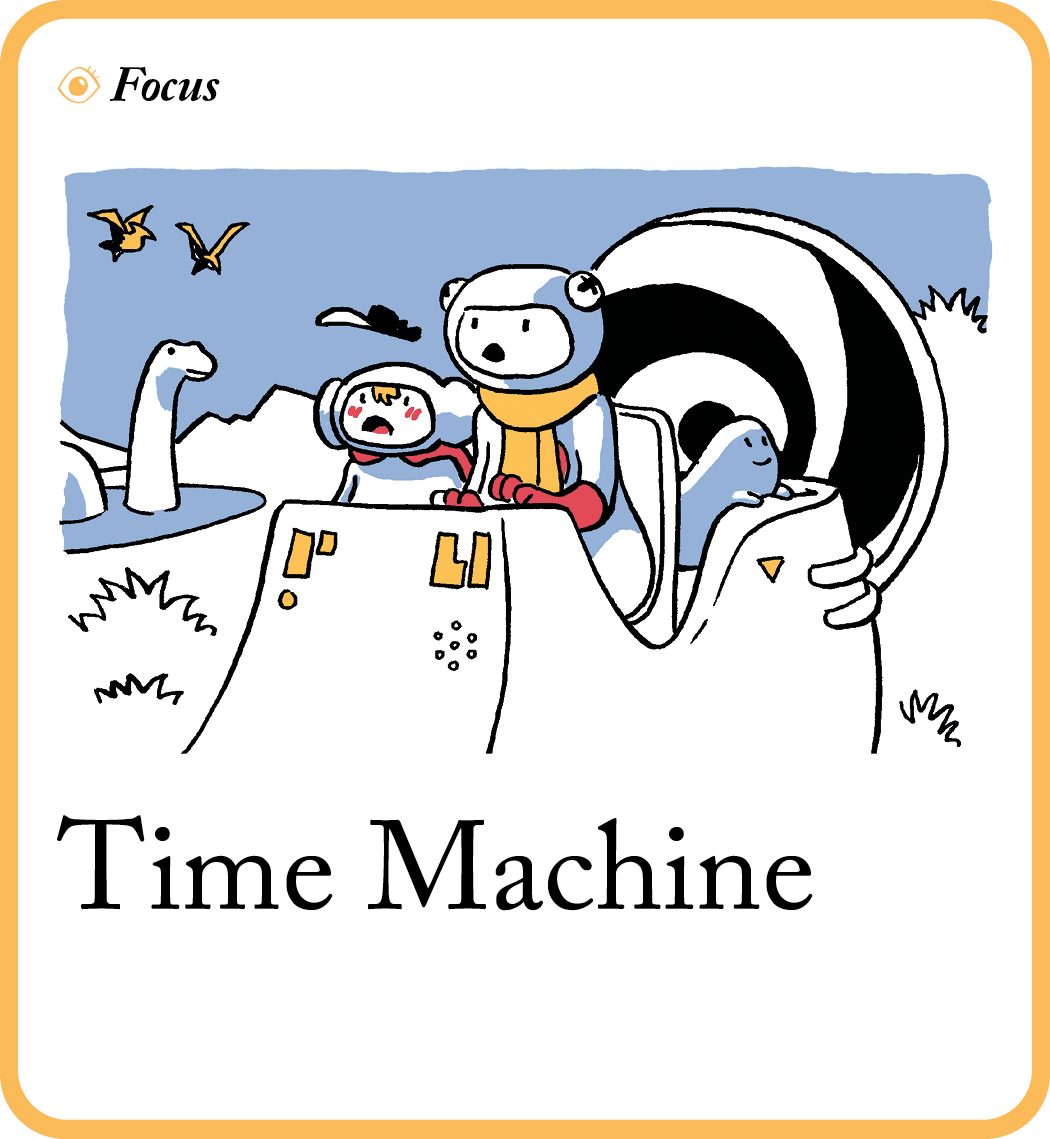

🧠 What’s the goal? Predict how an idea might fail – so that you can avoid that future – by taking a trip in an imaginary time machine.
👀 Why it’s important: We all plan for our ideas to work out well. But few plans work as expected. If you’re wrong about an important detail, you’ll wish you’d known sooner. When you look backwards from a certain failure, you’ll identify risks that are hard to see looking forwards.
💡 Tip: think about what is the smallest worst version of your idea, that can still just feasibily work.
Instructions
- Tell the group “We get in a time machine. When the door opens, it’s <date> (when you’d see the results of your idea) and it’s gone better than we ever dreamed! Look around, what’s it like?”.
a. Ask everyone to write down what they can see and hear in this great future. One description per yellow sticky. The example we are using in this tactic is about building an app for a coffee shop that allows customers to pre-order their coffee the day before. (3-6 minutes)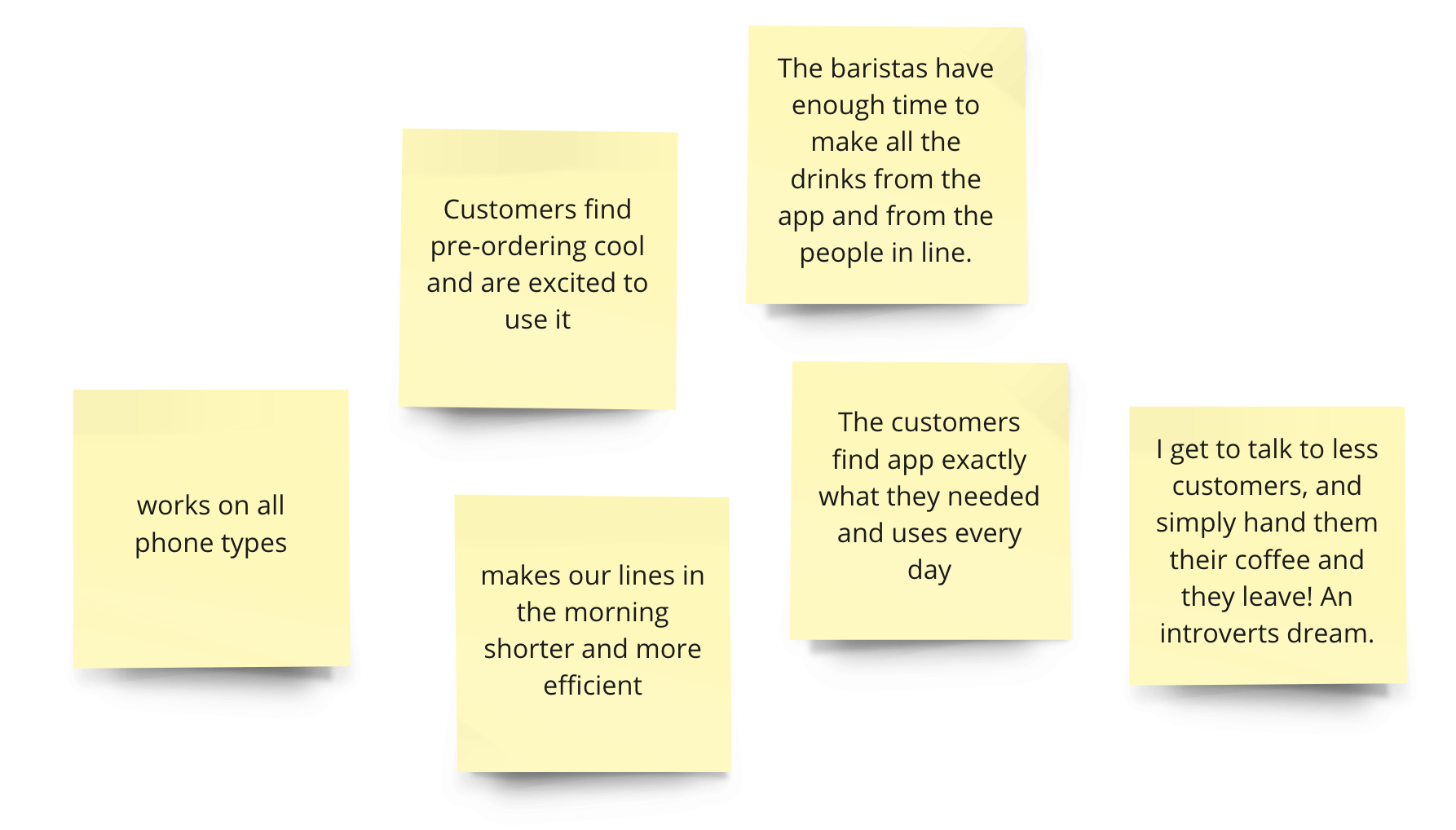
b. Gather all the stickies, then ask the group to quietly stack together vertically the ones that have a similar theme. (5-10 minutes)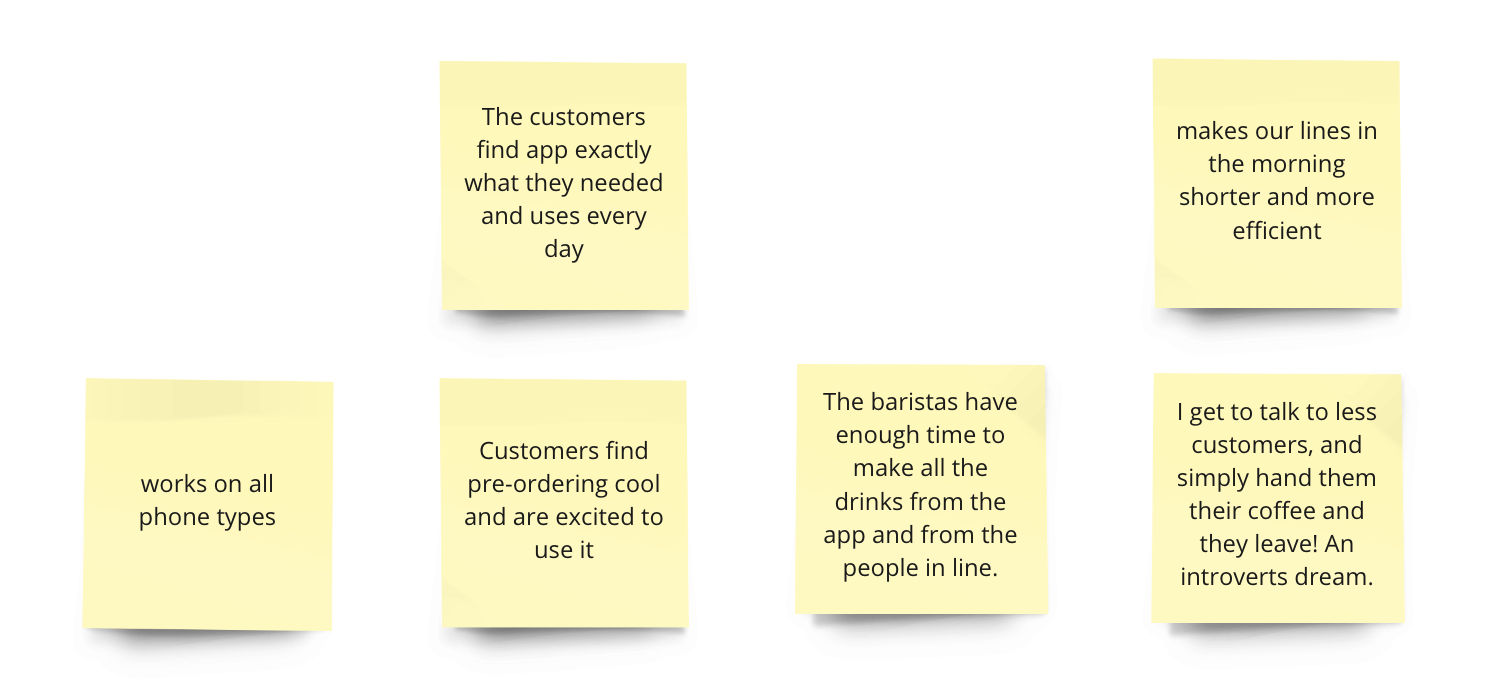
c. Summarise each cluster in 1–5 words on a green sticky. (4-6 minutes)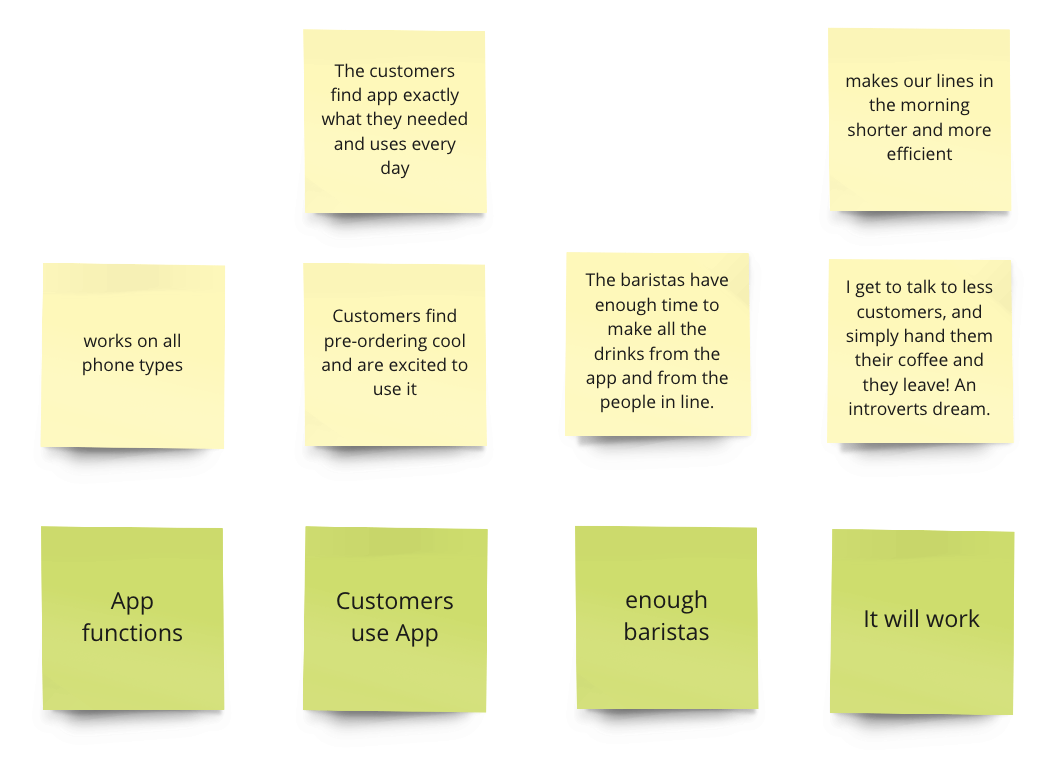
- Tell the group: “We get back in the time machine. This time, when the door opens, it’s <the same date> but in a parallel universe. Everything went so badly we wish we’d never started. What’s it like? How did it go so wrong?”.
a. Ask everyone to write down what they can see and hear in this world – and what went wrong! One per yellow sticky. (3–6 minutes)
Tip: remind people to visualise being in the future, looking back at the past. Try exaggerating how bad things are.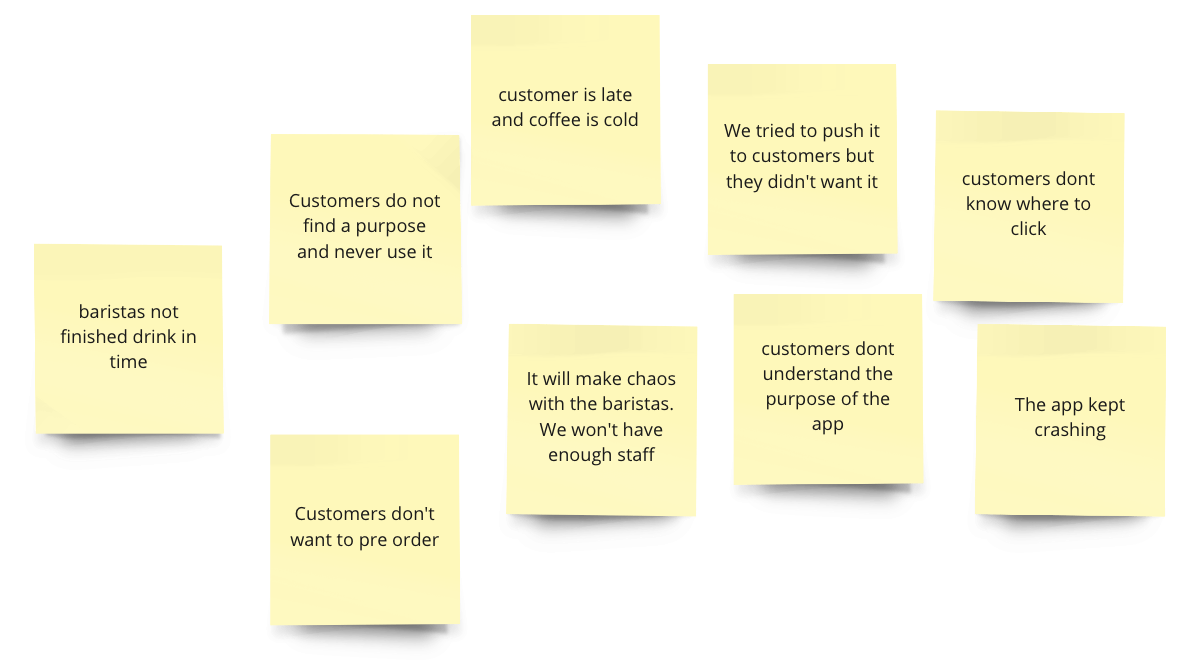
b. Repeat the quiet clustering, then summarise each cluster in 1–5 words on an orange sticky. (10-15 minutes)
- Move the green and orange summaries to a new area on your workspace. Pair up greens and oranges that are natural opposites, then add an opposite for any that don’t have one. For example: people want it/people don’t want it. (3-5 minutes)
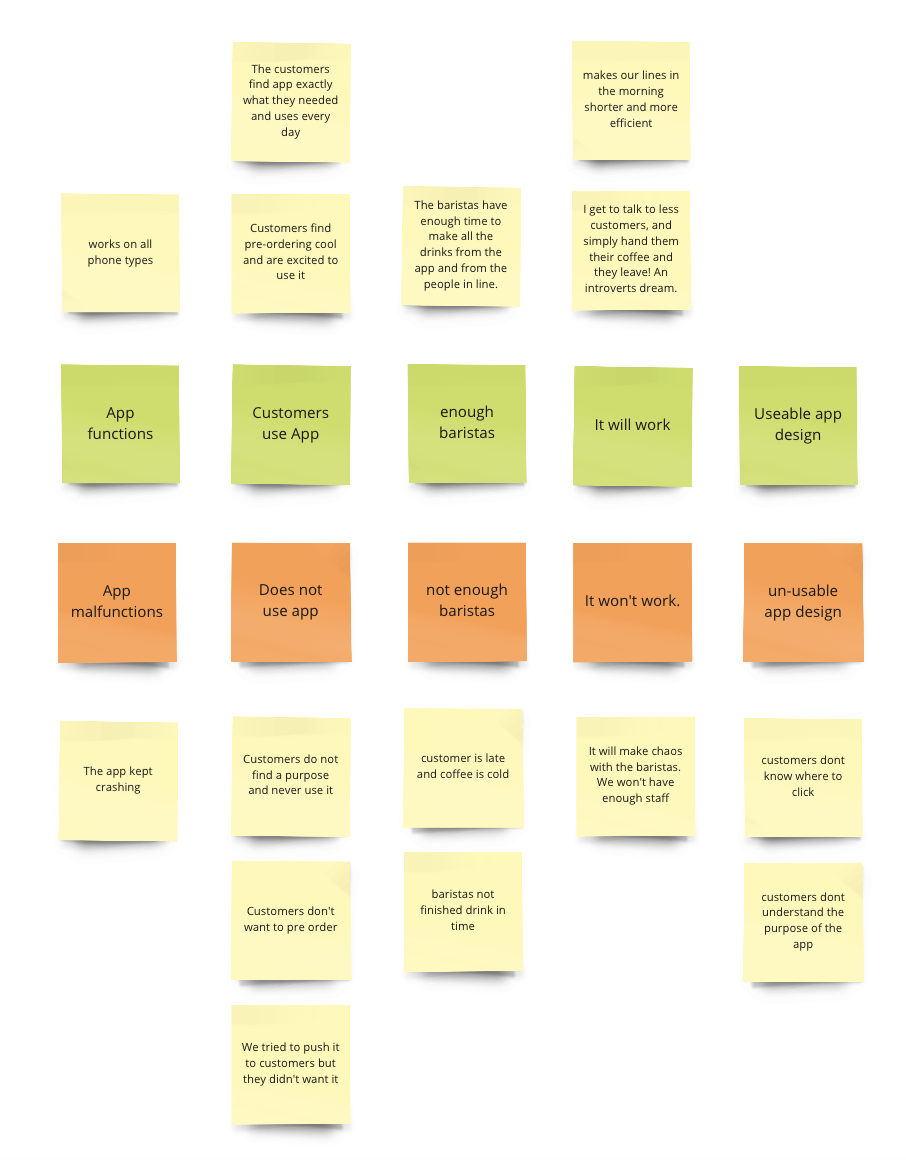
- Ask everyone to vote for the three orange stickies they find scariest: outcomes that are both plausible and severe. Notice differences in fears between people. Choose the one you will test out first in the next activity. (5-10 minutes)
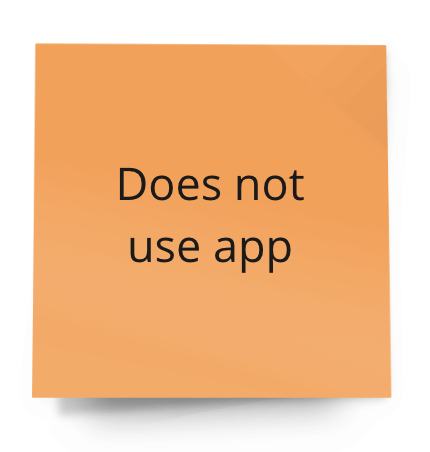
3
Use Multiverse Map to map potential risks
Use Multiverse Map to map potential risks
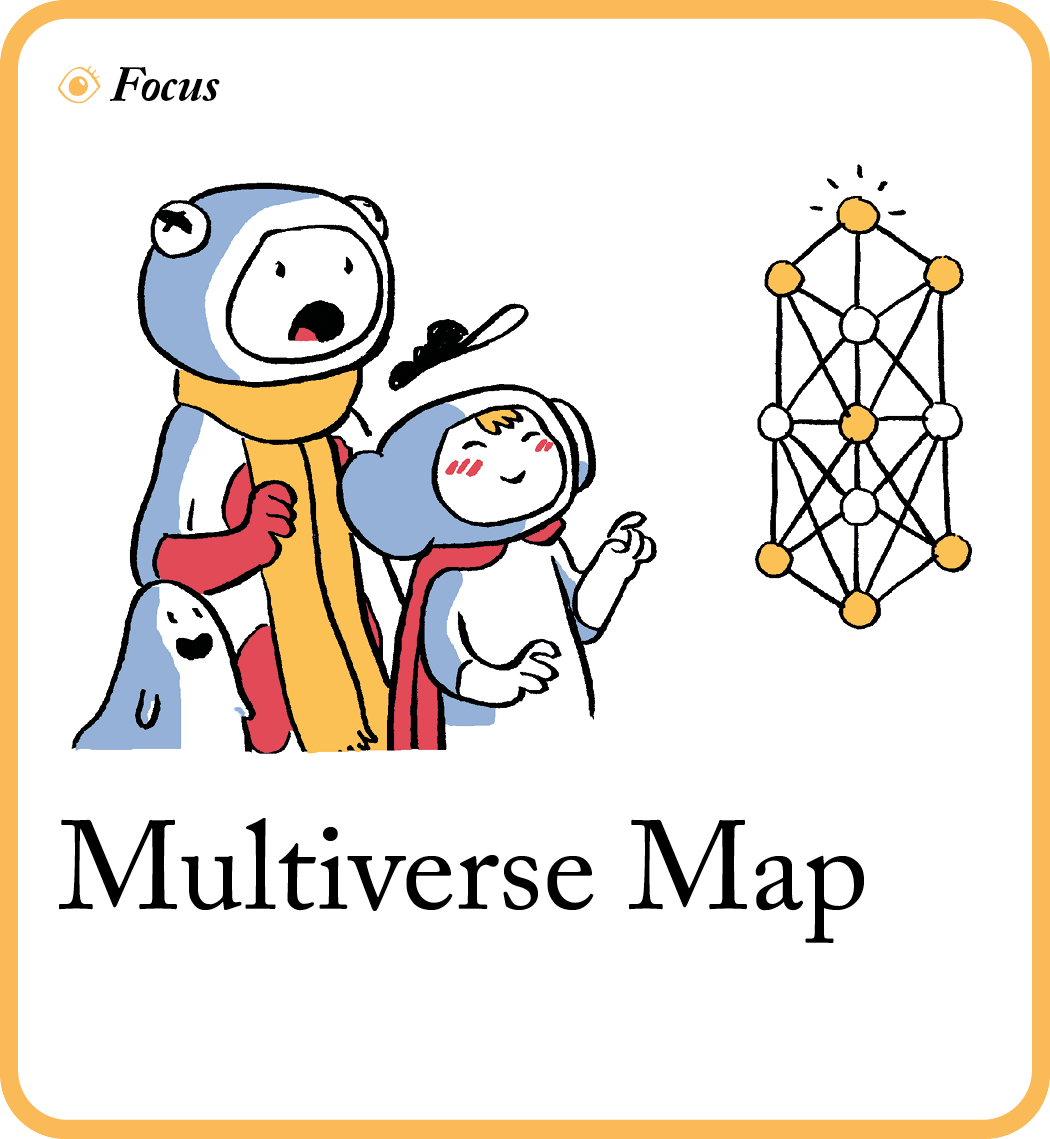

🧠 What’s the goal? In a potential customer’s shoes, tell the story of what they’ll see and do with your innovation in the best and worst universes. Then you can spot – and amplify – the behaviours that are critical to success.
👀 Why it’s important: Teams obsess over the work that goes on behind the scenes of an innovation; customers only care if it can help them make progress with their struggle. Your story will cover a person finding, buying and using your idea (or not) to test how coherent it is.
💡 Tip: we want people to use your product (app in this example) but for us to be successful we are depending on the behaviours of people outside of our control. Now we will map out their behaviour to find the potential risk points.
Instructions
-
Ask: “When our work is done, in the best possible world, what will a future customer experience first?” Write the answer on a green sticky.
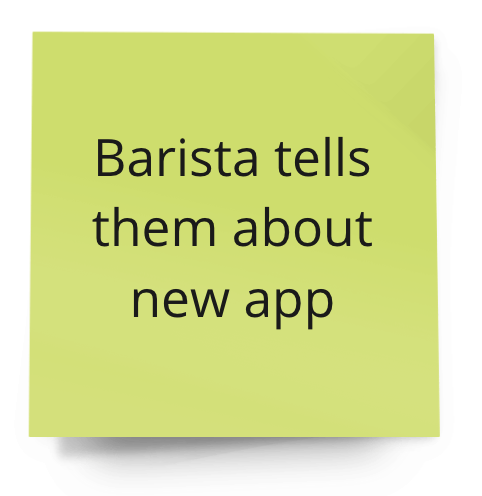
-
Ask: “And in the best possible world, what’s the very next thing they do or see?” Write that on a green sticky to the right of the first.

-
Ask: “But in the worst possible world, what do they do or see instead of that?” Write the answer on an orange sticky underneath the green one you just wrote.

-
Repeat steps 2 and 3, describing what the customer sees and does, until the green stickies show complete success for them (and you). Join your stickies up with arrows to make the flow easier to follow.

Tip: you can add multiple green or orange options for each step, but if a step has more than three options, break it into smaller steps. Remember: clarity comes from focusing only on the very best and very worst worlds.
-
To test whether your story makes sense from your potential customer’s viewpoint, read it out as yourself. Rewrite, rearrange and add stickies until it makes sense. For example: “I order the drink I want…oh but wait, I need to put my name in the order so they know who it’s for, too”.
-
Add percentages to the arrows to indicate how likely each branch is. You can use estimates until you get real data from analytics or probes. Finally, add numbers above the green stickies to show how many of an initial batch of customers might get through the story.

4
Use Pivot Triggers to spot change signals for future development
Use Pivot Triggers to spot change signals for future development
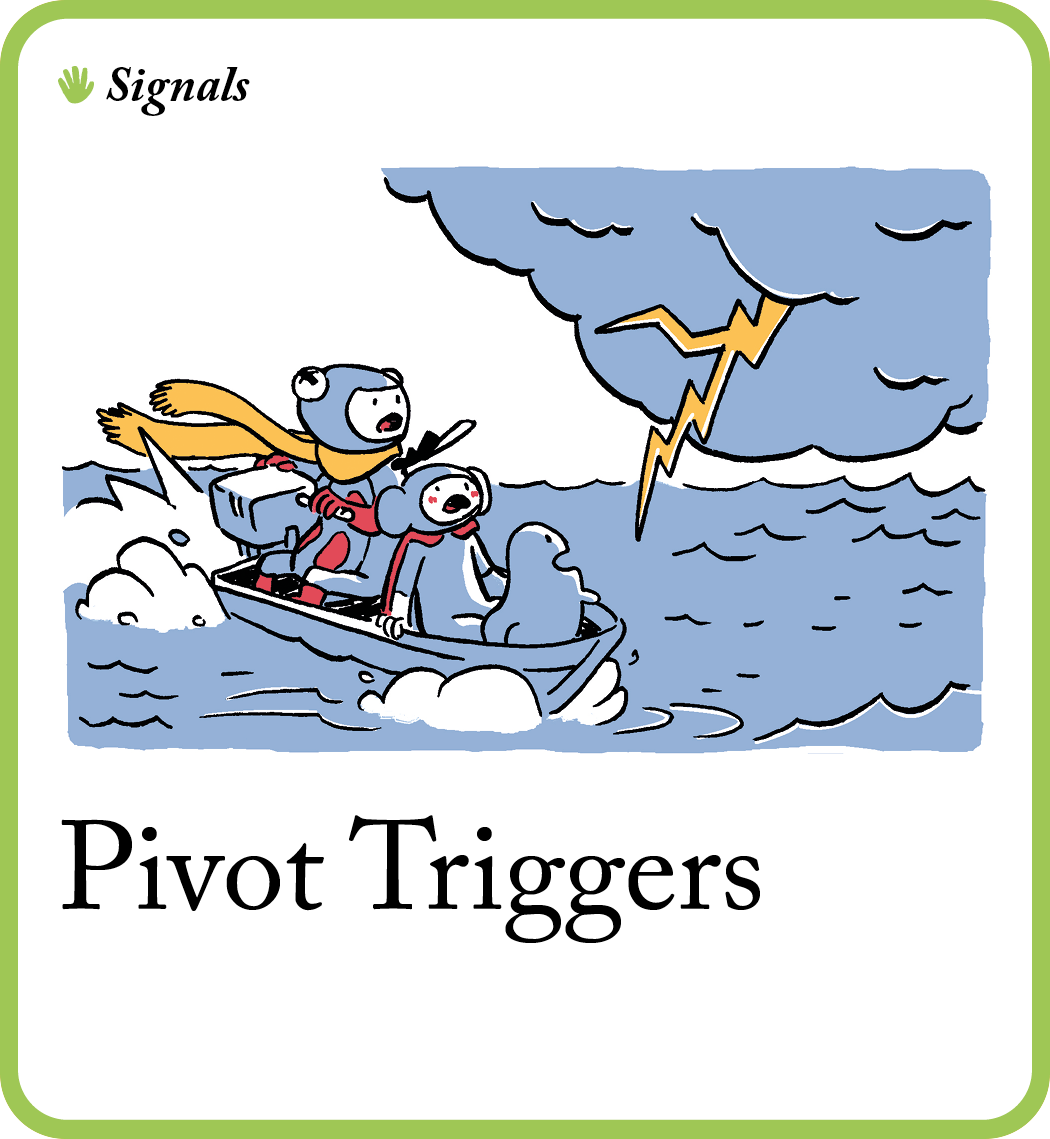

🧠 What’s the goal? Agree what you’ll need to see from the world for you to feel confident about investing in your idea.
👀 Why it’s important: Your idea’s success always depends on the behaviours of people and systems that are outside your control. So before you commit fully to an idea, set pivot triggers with your team. Agree how much of those critical behaviours will be enough for you to keep going. Promise to pause and rethink if you’re not seeing them.
💡 Tip: “But what will we pivot to?”. If you knew that, you’d already be doing it. What you learn from taking action now will lead to ideas you can’t have today. A pivot can mean anything from a tweak of wording to starting again with an entirely new idea.
Instructions
- Gather your team around your workspace and record your answers to these questions on stickies.
Example situation: imagine the owner of Pip’s Cafe has already built the app, but it’s not getting used much (we know, we know!). Now the owner is talking about putting in more effort to turn it around, but you’re concerned that it’s good money after bad.
a. What behaviours do we need to see from a customer or a system to know our idea is successful in the future?
Example question: “What would you need to see in the world (coffee shop owner) to change your mind and ‘kill’ the app?”
Example answer: “Well, if we trying adding notification and we are still not seeing anyone use the pre-order coffee app more than once, we will then kill the app.”
b. How much of each behaviour will be just enough to give us confidence to keep going with our idea? For example, 25% of customers who are introduced to the app use it to pre-order their coffee. - Combine the answers to create Pivot Triggers: “We’ll pivot if we don’t see [X amount of the agreed behaviour] by [date] when we [test a tiny, rough version of our idea].”
Edit the sentence so it’s easy to read.
- Share your triggers with everyone who would be affected by a decision to pivot. Set a date to check in, then get to work.
5
Use Anatomy of an Insight to reflect and broaden your thinking
Use Anatomy of an Insight to reflect and broaden your thinking


🧠 What’s the goal? Tell more than one story about the situation you’re observing, so you can decide on your best next action.
👀 Why it’s important: This tactic helps you separate what you’ve seen or heard (signals) from what you believe it means (stories) and what you think you should do next (options).
💡 Tip: try this alone for the first round to develop the skill… but the power of this tactic grows exponentially when you do it with a team.
Instructions
-
Set the scene: “Our exploration gave signals for changing direction: what the person (or people) said and did, and what occurred to us as we investigated. Given all the signals we have, we need to decide: do we continue with, abandon, or adapt our idea?”
-
On yellow stickies, have the group (or yourself) list signals observed. Over the course of this example we focus on three (but you will want to bring in all of them):
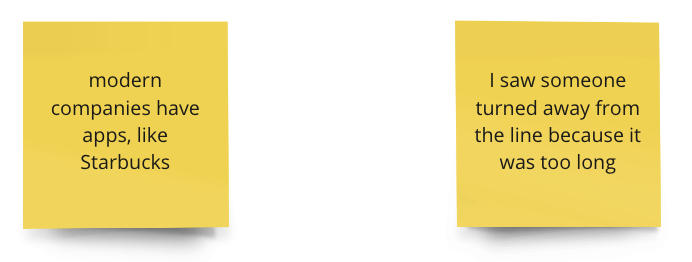
-
Say “Given those signals, what’s an option for an action that we might take next?” Write these options on blue stickies.
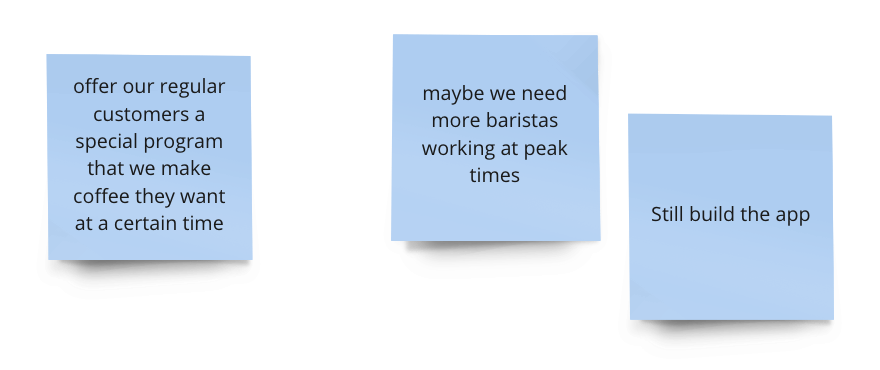
-
Ask: “What story explains why that option is a good response to those signals?” Write it on a pink stickies.

-
Say “That story we’re telling ourselves limits what we can see and do in the world. Write at least two alternative stories that could explain the signals.” Write them on pink stickies. “As you add stories, also add any new signals you realise you’d forgotten.” Write them on a yellow stickies.
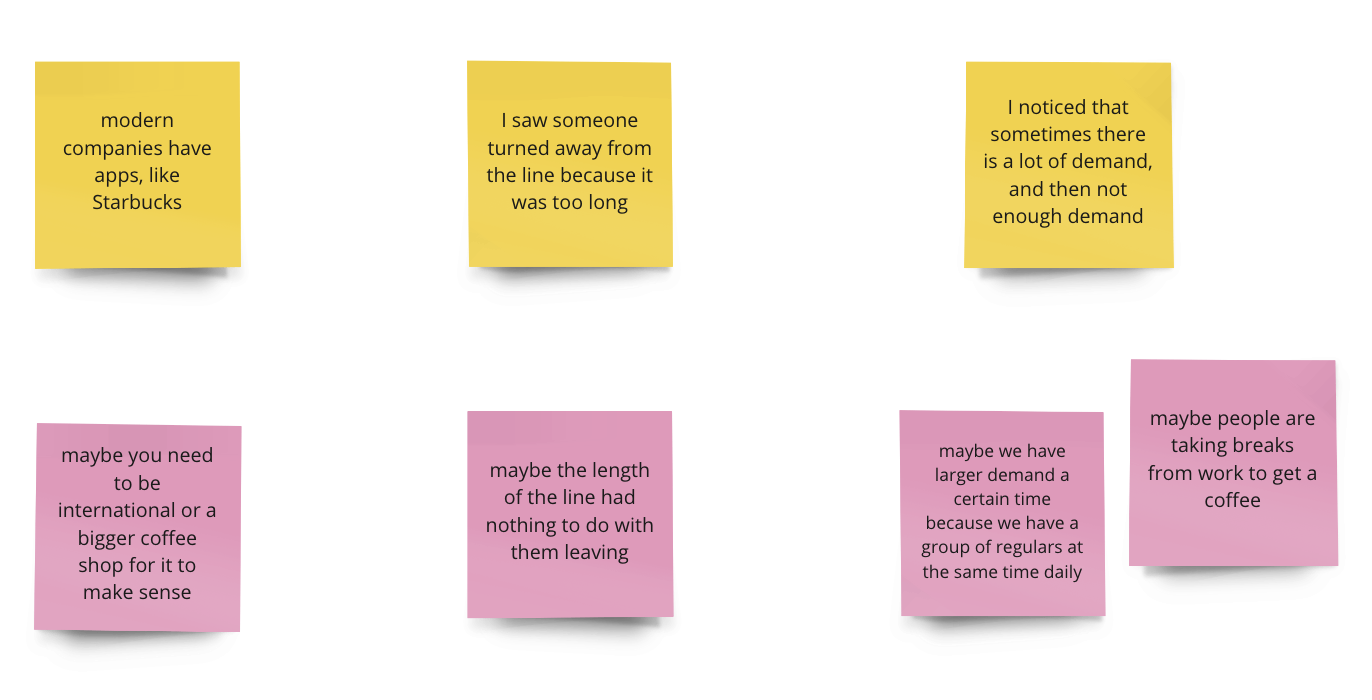
-
Say “For each new story you added, what other options for action would make sense?” Add those on more blue stickies.
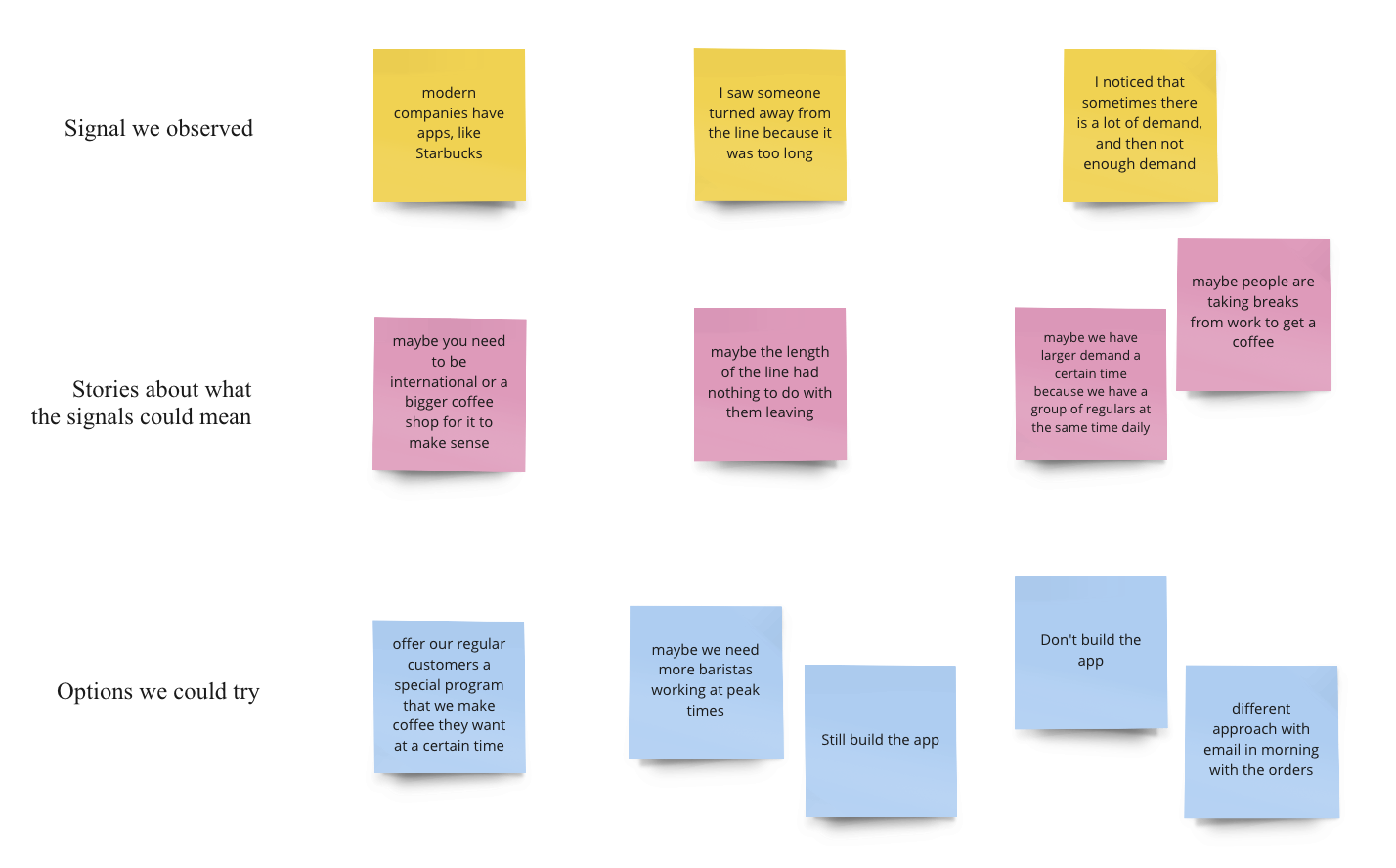
-
Have the group vote on the stories that resonate most with them. The pattern of voting usually reveals a dominant theme or two to explain what might be going on.
-
In light of the vote, revisit your original idea. This is the key question for all of these activities: do you feel you want to keep going, abandon it for a better idea, or adapt it?
⬇️ Now that you have done all five tactics, ask yourself the question above and then choose the tactic from this loop that matches the need.
What ways can I use this recipe?
- 10-minute challenge: choose the tactic that scares you the most and try it out with a friend or colleague. Don’t overthink it! If nothing scares you, lucky you. Start with the Time Machine.
- Take your time: The order of these tactics don’t matter. Use them individually when needed during the entire process of creating and improving your idea.
Some tips
- Don’t make it hard. Take tiny, bold steps every day instead of changing everything all at once.
- Mistakes are important. They’re how you learn! So don’t try to be perfect, but do pay careful attention to failure.
- You are not your work! Don’t think “I need to get this right”, think “I want to find out as fast as possible what I can fix to make the experience for the user better.”
What next?
Congratulations you have completed your collection of tactics, each helping you figure out How to Unlock Innovation! But this is only the beginning. Now you have uncovered the hidden problems behind proposed solutions, opened the door to more experimental thinking, mapped out behaviors to reveal potential risks, identified change signals crucial for future development, and broadened and reflected upon your thinking.

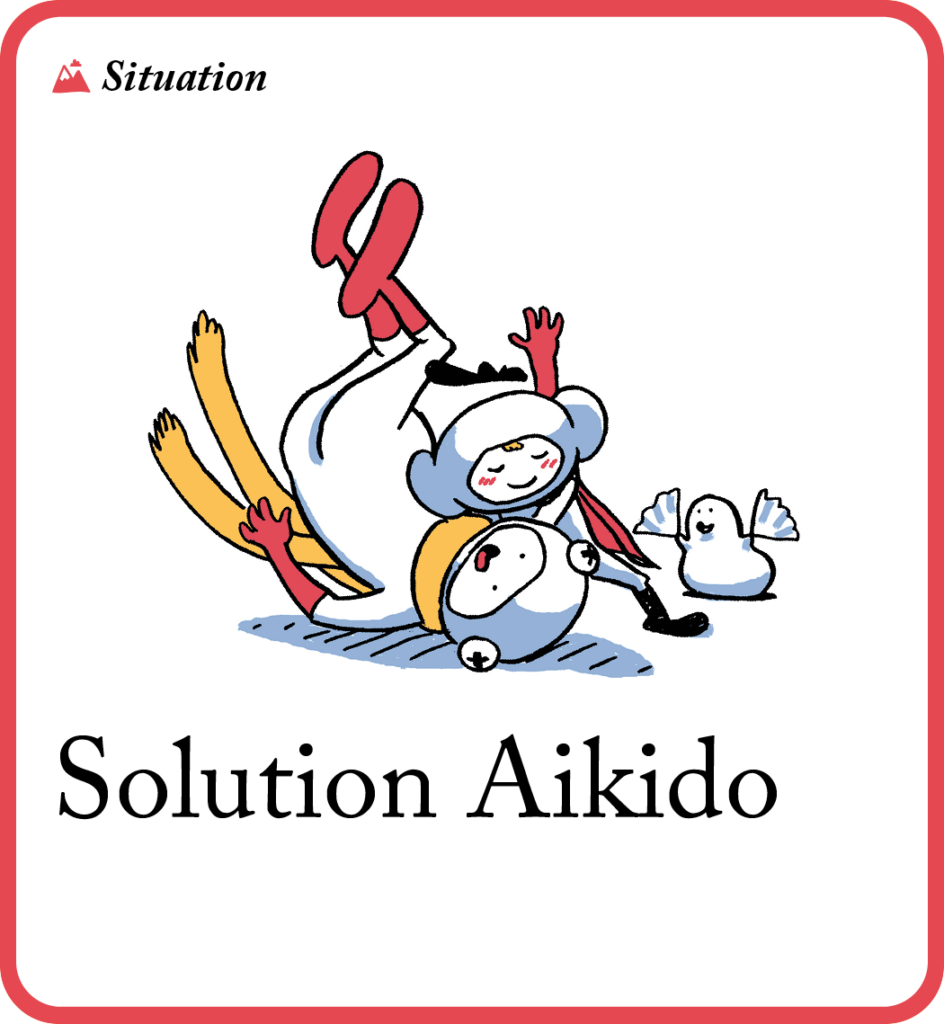
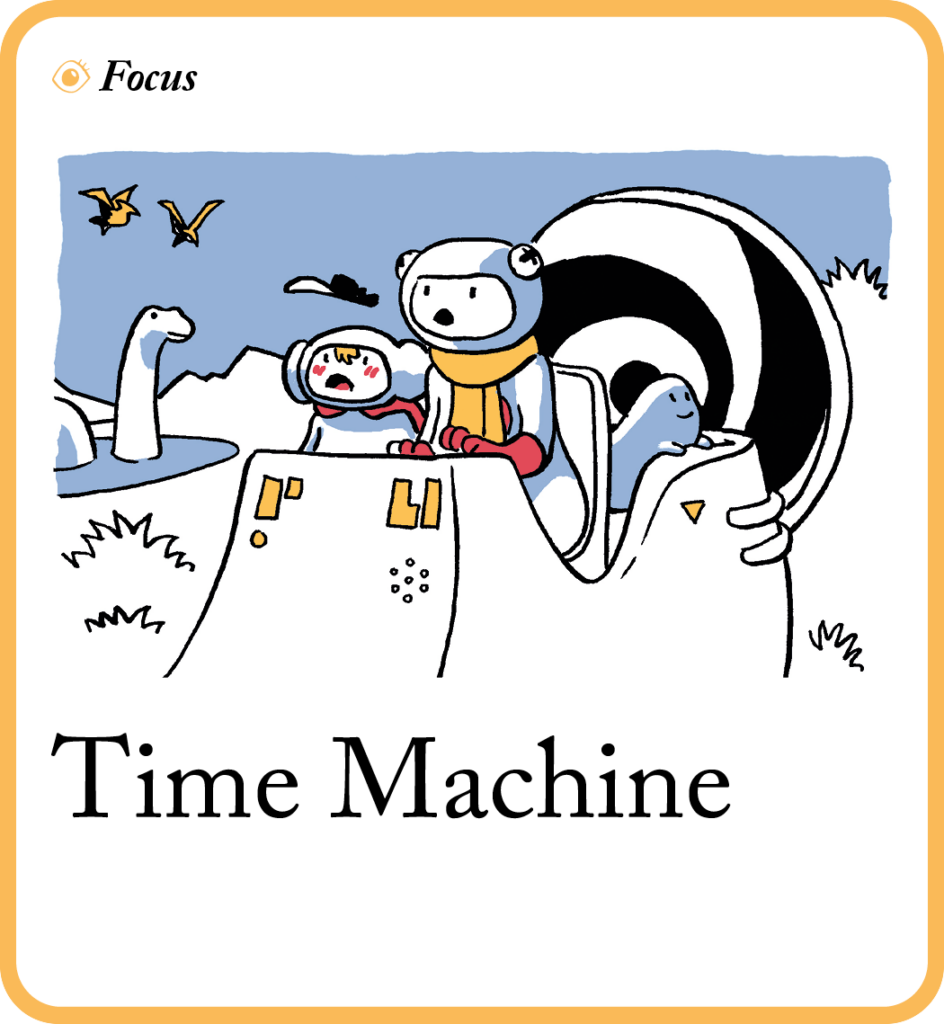
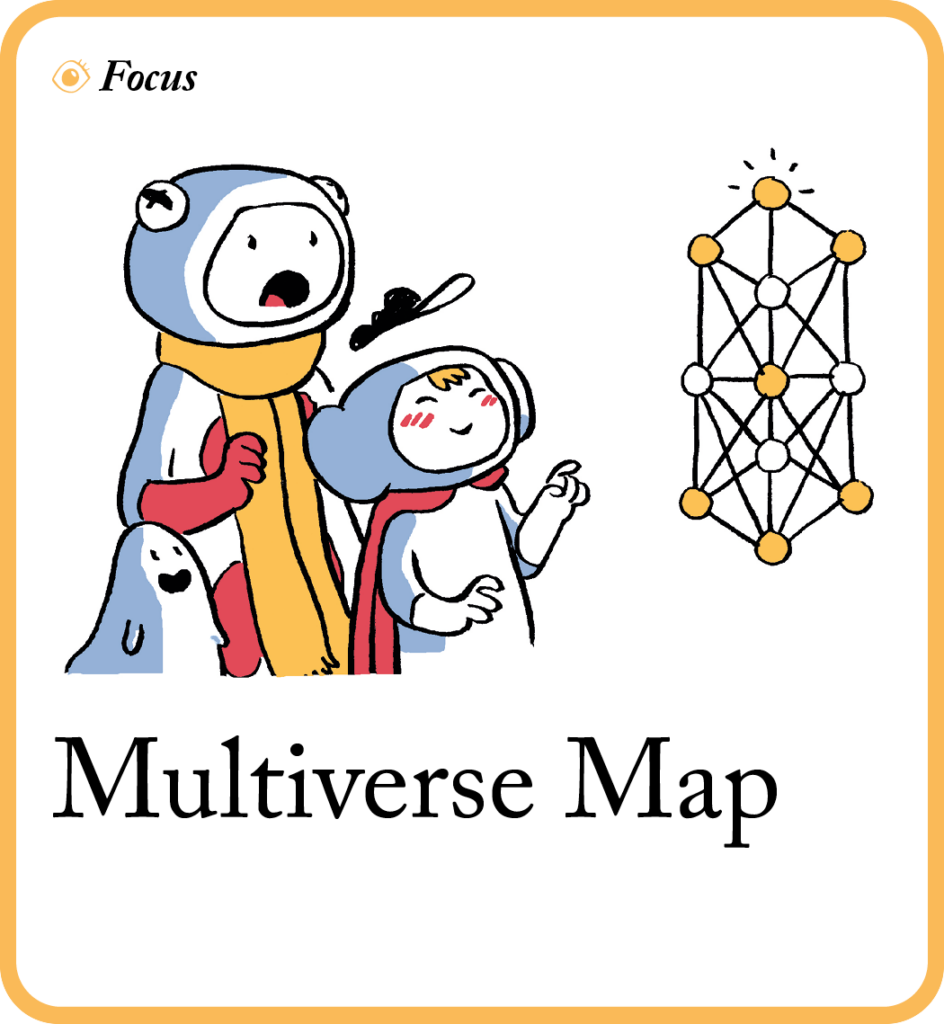
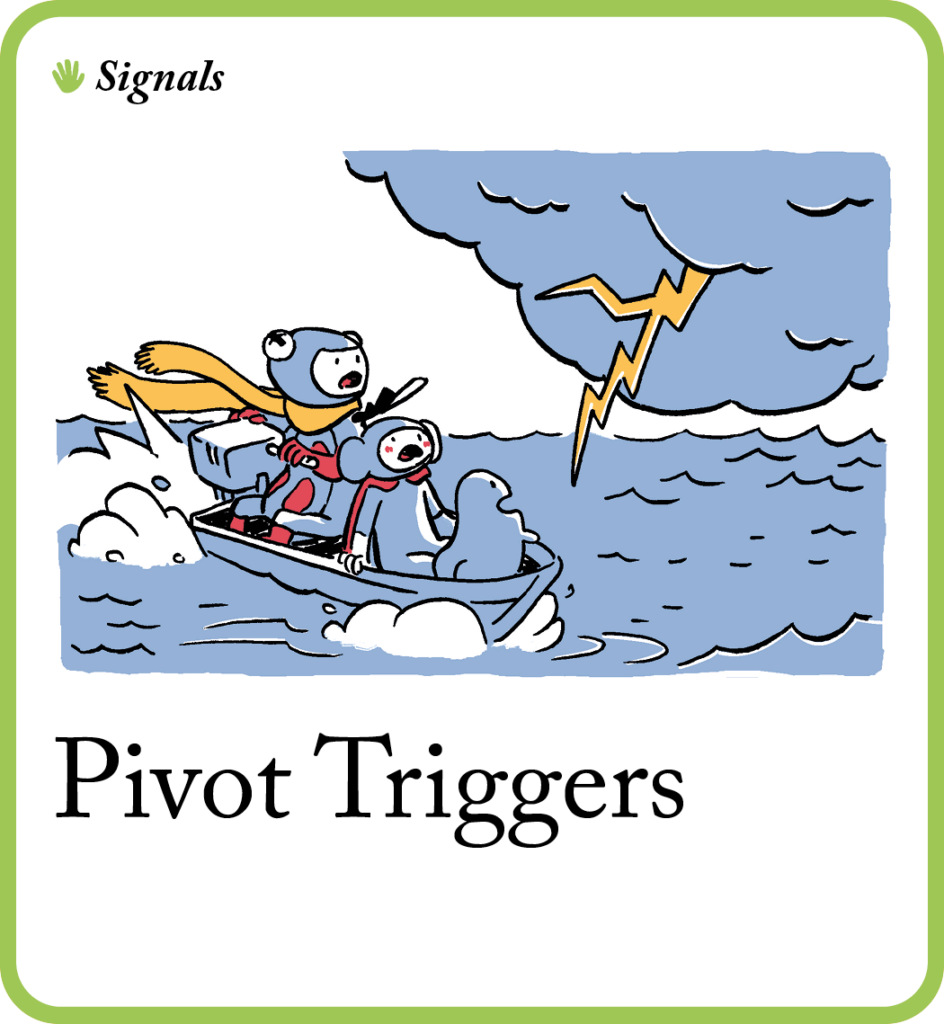
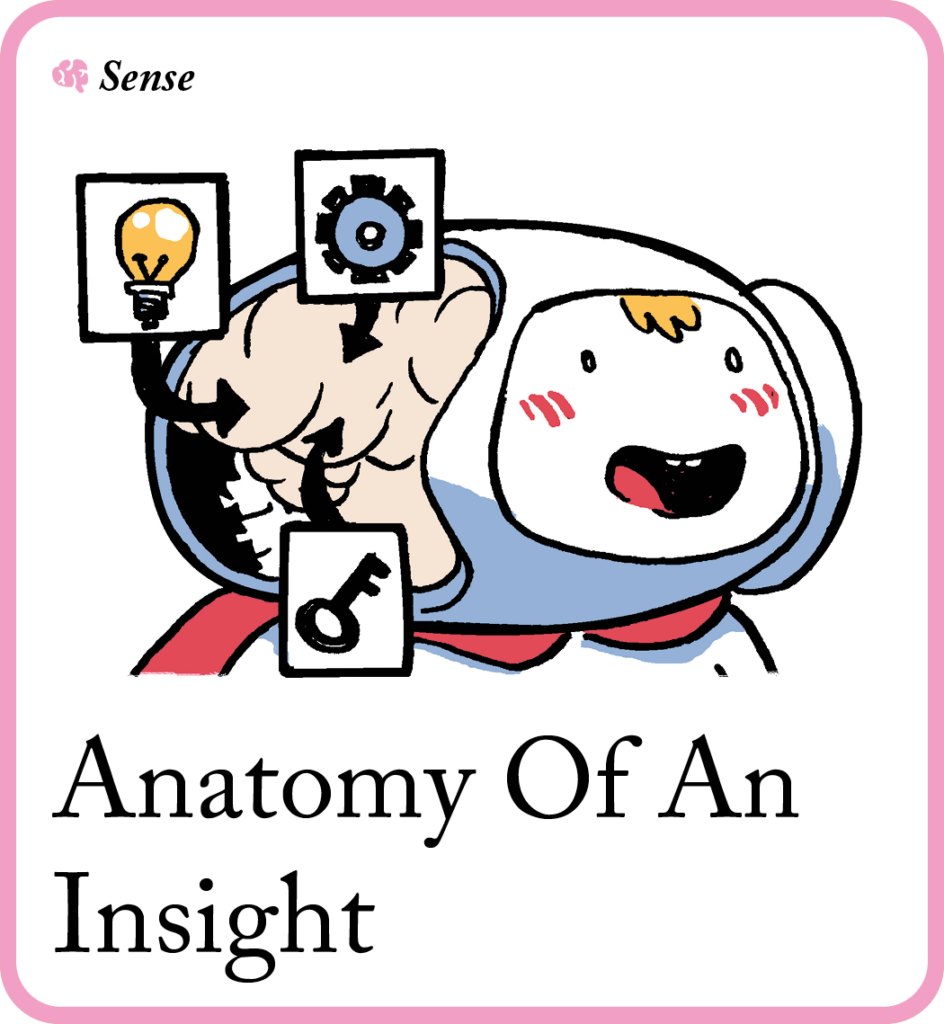
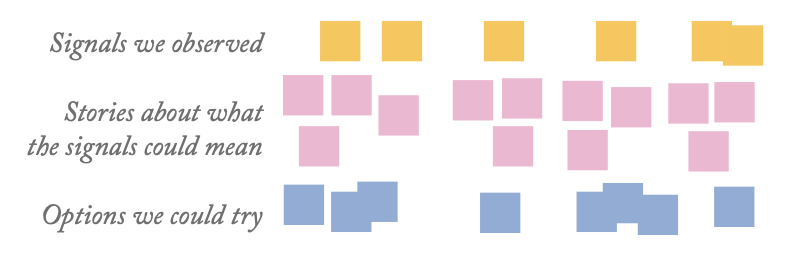
If you leave us your email, we'll let you know if we update this guide based on your feedback.